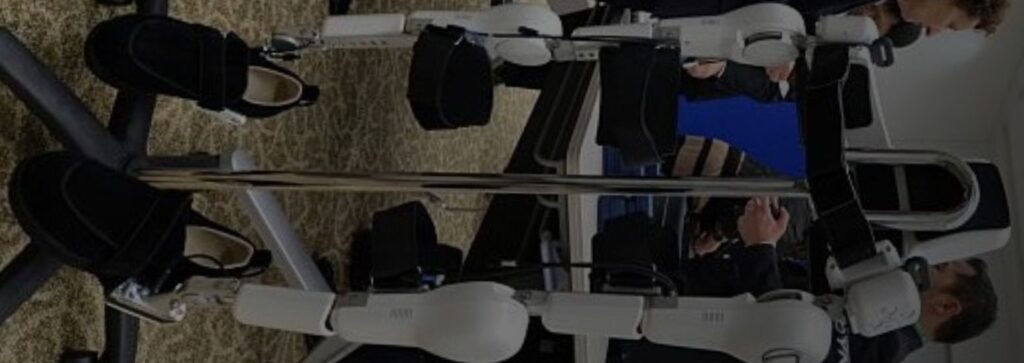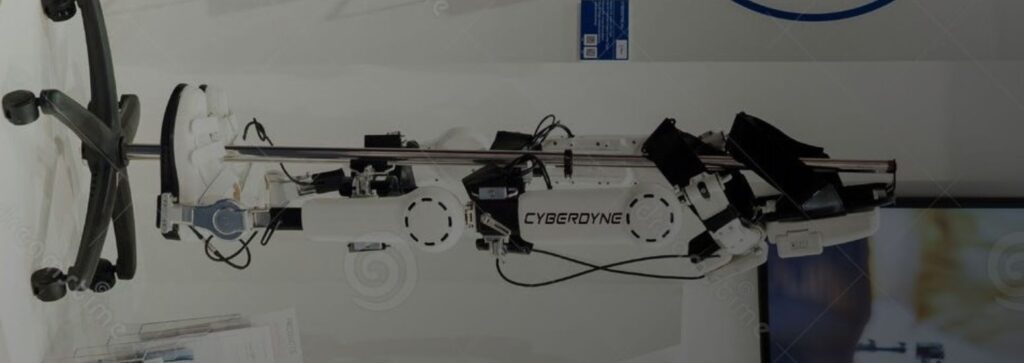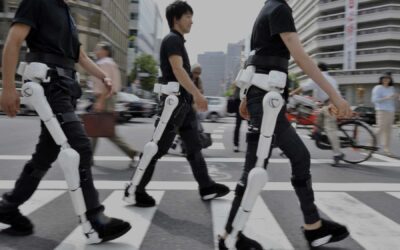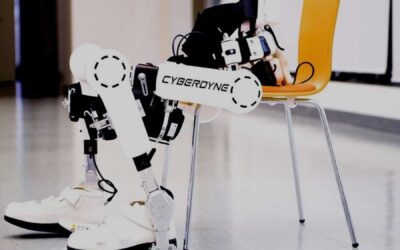Cyberdyne HAL® enables those who have lost use of their lower limbs to recover the pleasure of walking. The robotic suit moves the legs based on the patient’s intentions. Cyberdyne’s Hybrid Assistive Limb (HAL®) increases locomotor activity for individuals with orthopaedic injuries.
Cyborg Helps in Orthopaedic Injury

- When an Orthopaedic Injury patient attempts to move, the brain sends a signal to the muscle to order the action. At that point, a weak signal indicating the wearer’s desire to move shows on the skin’s surface. Wearable Cyborg™ HAL® uses sensors on the skin’s surface to detect “bio-electrical signals” and perform motions based on the wearer’s orders.
- When we move our bodies, we first think about the movement.
By thinking, “I want to walk,” the brain transmits messages through the nerves to the muscles required for the movement. - A healthy person’s muscles get messages from the brain, allowing them to move with only the force required to match the aim.
- As the impulses travel to the muscles, they leak onto the skin’s surface as very feeble signals known as “bio-electric signals [BES]”. HAL can read the BES using electrodes that were first created and affixed to the wearer’s skin surface. HAL determines the wearer’s desired motions using a variety of additional information.
- A Wearable Cyborg™HAL® identifies and manages the power unit based on the wearer’s motions, allowing for more effective movement or exertion. Once the action is completed, the brain examines how the body moved in response to the signals sent. When HAL recognises the wearer’s desired motion, the body returns information on the successful movement. This permits the brain to progressively learn how to deliver the signals required for proper movement. Repeating this technique can assist individuals with disabilities improve their physical function after removing the HAL®.
HAL recovery with Orthopaedic Injury patients

Exoskeletons and rehabilitation robots are utilised in physical therapy to address impairments such as neurological illnesses, spinal cord injuries, cerebral palsy, and gait abnormalities in orthopaedic injuries. Exoskeletons improve capacities, aiding movement and rehabilitation of orthopedic patients.
Cyberdyne provides innovative neuro-robotic rehabilitation solutions for the benefit of patients all around the world. Our objective is to enable persons to walk independently with our non-invasive technological solution, HAL®.
HAL® has several uses, including enhancing physical function in welfare and medical areas, providing heavy labour assistance in other professions, and assisting with catastrophe recovery.
Robots are utilised in the process of patient rehabilitation for orthopaedic injuries.
- Lower and upper-limb exercise
- As assistance devices
- Wearable devices for both upper and lower limbs
Learn how people all across the world utilise Cyberdyne technology to reclaim their mobility and freedom.
Connect with us at https://rehabmodalities.com/ to learn more about our healthcare platform that connects the ‘Human and the Robot’



